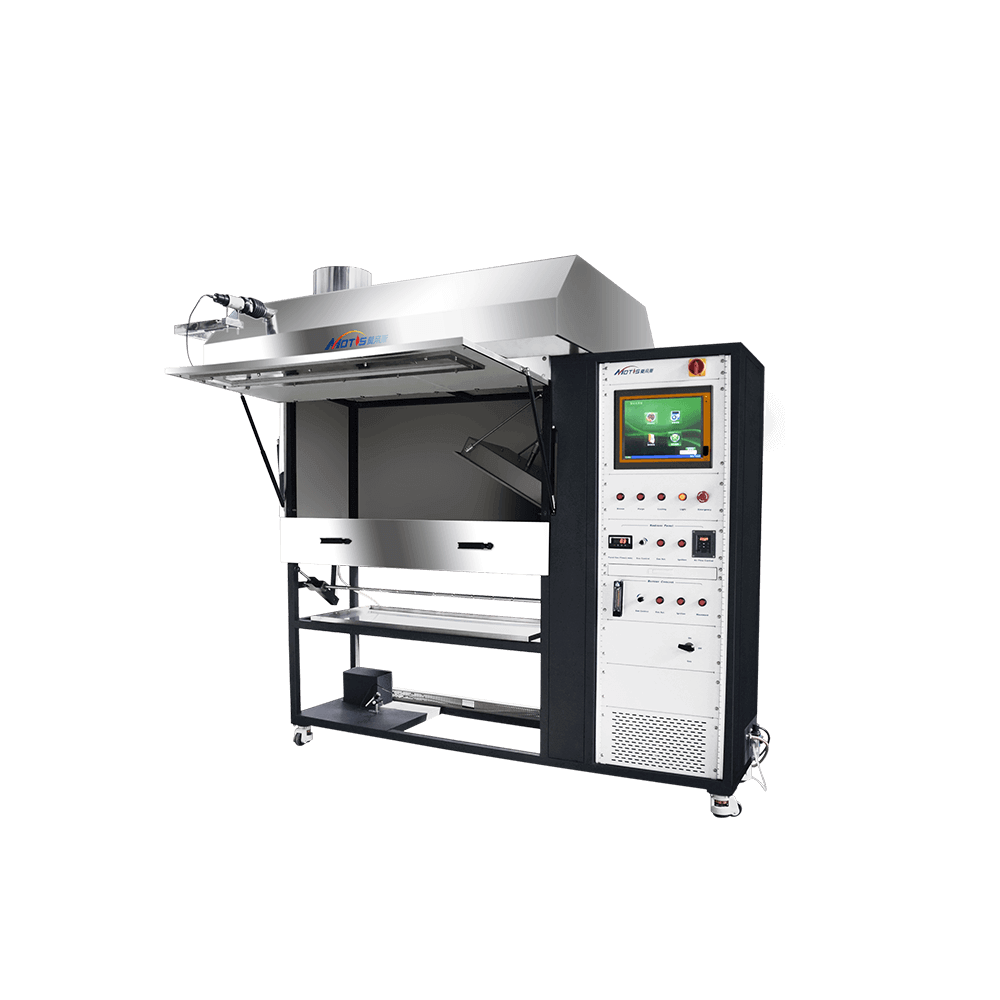Railway Material Fire Test Equipment
Transportation vehicles have a large passenger flow, most of the lines are in relatively confined spaces, disorderly people are highly dense, and there are many difficulties in escaping passengers and rescuing personnel in the event of a disaster. In recent years, fire accidents on trains have been frequent, resulting in serious casualties and property damage, so countries around the world are constantly putting forward higher standards of prevention for potential fire safety hazards in railways.
The design of the vehicle and the choice of materials will minimize the probability of fire, control the rate and extent of fire development and minimize the impact of fire on passengers and crews.
Therefore, it is important to assess the flammability, flame spread characteristics, heat release rate & total heat release, smoke release rate & total smoke release, and smoke toxicity of materials used on trains.
Regional standards for fire testing of rail vehicles include:
| Area | Standard |
|---|---|
| European Union | EN45545-2 Railway applications - Fire protection on railway vehicles - Part 2: Requirements for fire behavior of materials and components |
| Germany | DIN 5510-2 Preventive fire protection in railway vehicles |
| France | NF F 16-101 Rolling Stock - Fire Behaviour - Material sclection |
| United Kingdom | BS 6853 Code of practice for fire precautions in the design and construction of passenger carrying trains |
| United States | NFPA 130 Standard for Fixed Guideway Transit and Passenger Rail Systems |
| China |
TB/T 3237 Flame retardant technical specification of decorating materials for multiple unit train TB/T 3138 Technical specification of flame retardant materials for railway locomotive and vehicle |
| International Railway Union | UIC 564-2 Regulations relating to fire protection of railway vehicles |
ISO 5660-1, ASTM E1354
ISO 5659-2, ASTM E662
ISO 9239-1, ASTM E648
ISO 4589-2, ASTM D2863
ISO 5658-2, IMO FTP Code
ISO 1182, BS 476-4, IMO FTP Code Part 1, ASTM E2652
ISO 1716
ISO 11925-2
UL 94, IEC 60695-11-10, ISO 9770, ASTM D635
EN 60332, IEC 60332
EN 61034, BS 6853
IEC 60332-3-10, IEC 60332-3-21~25,
DIN 54837, DIN 5510-2
ISO 19702, EN 17084, EN 45545-2
EN 16989, EN 45545-2
















